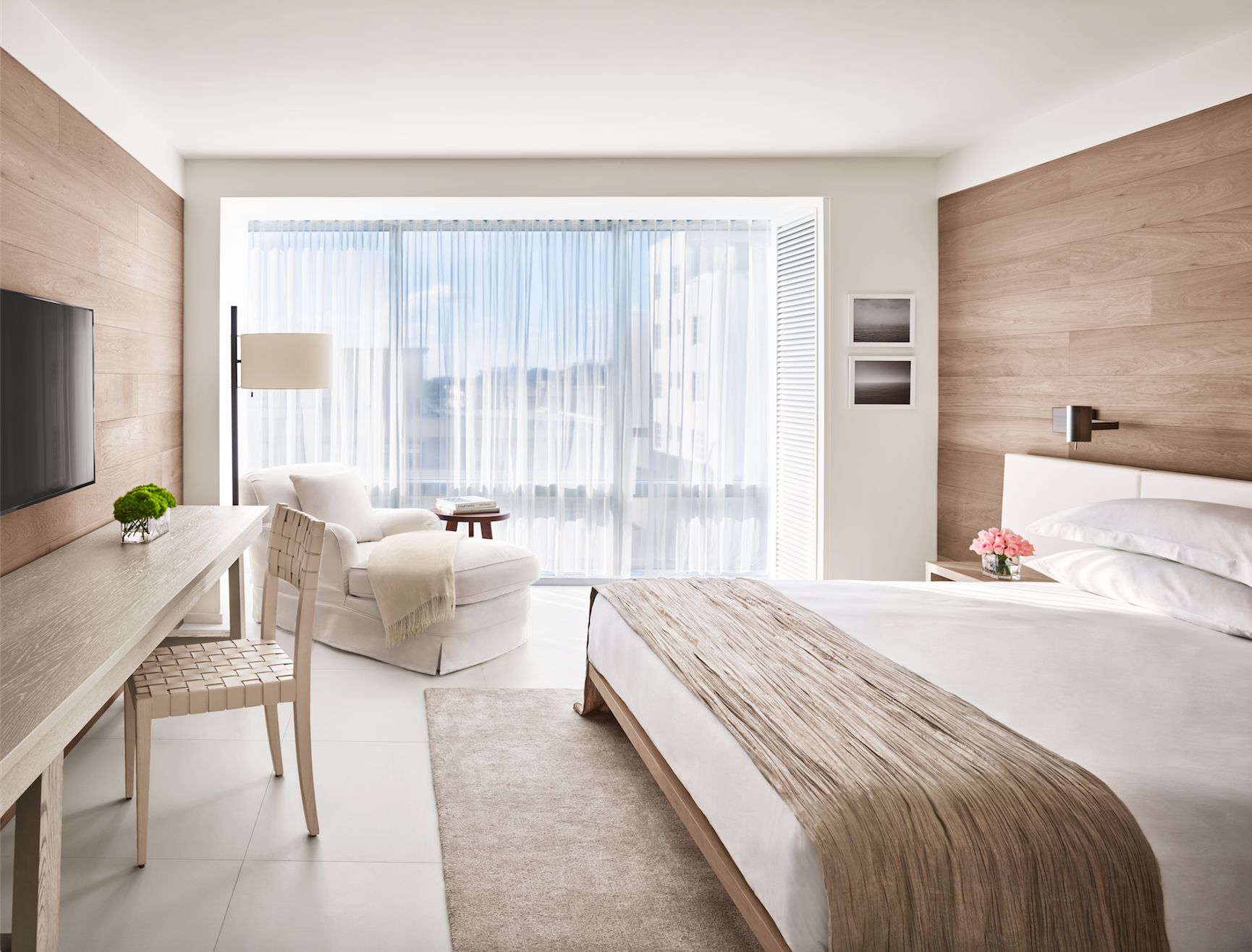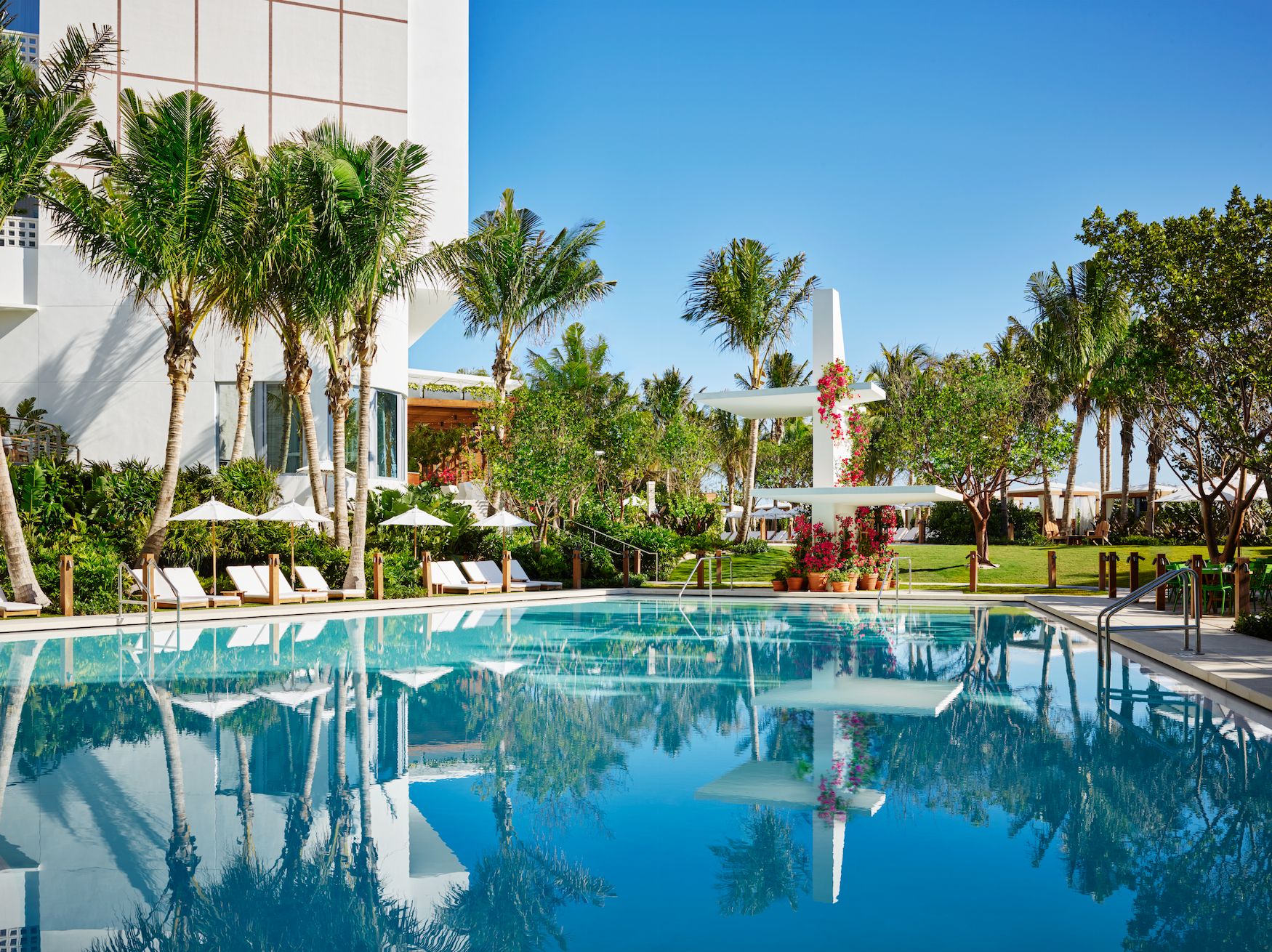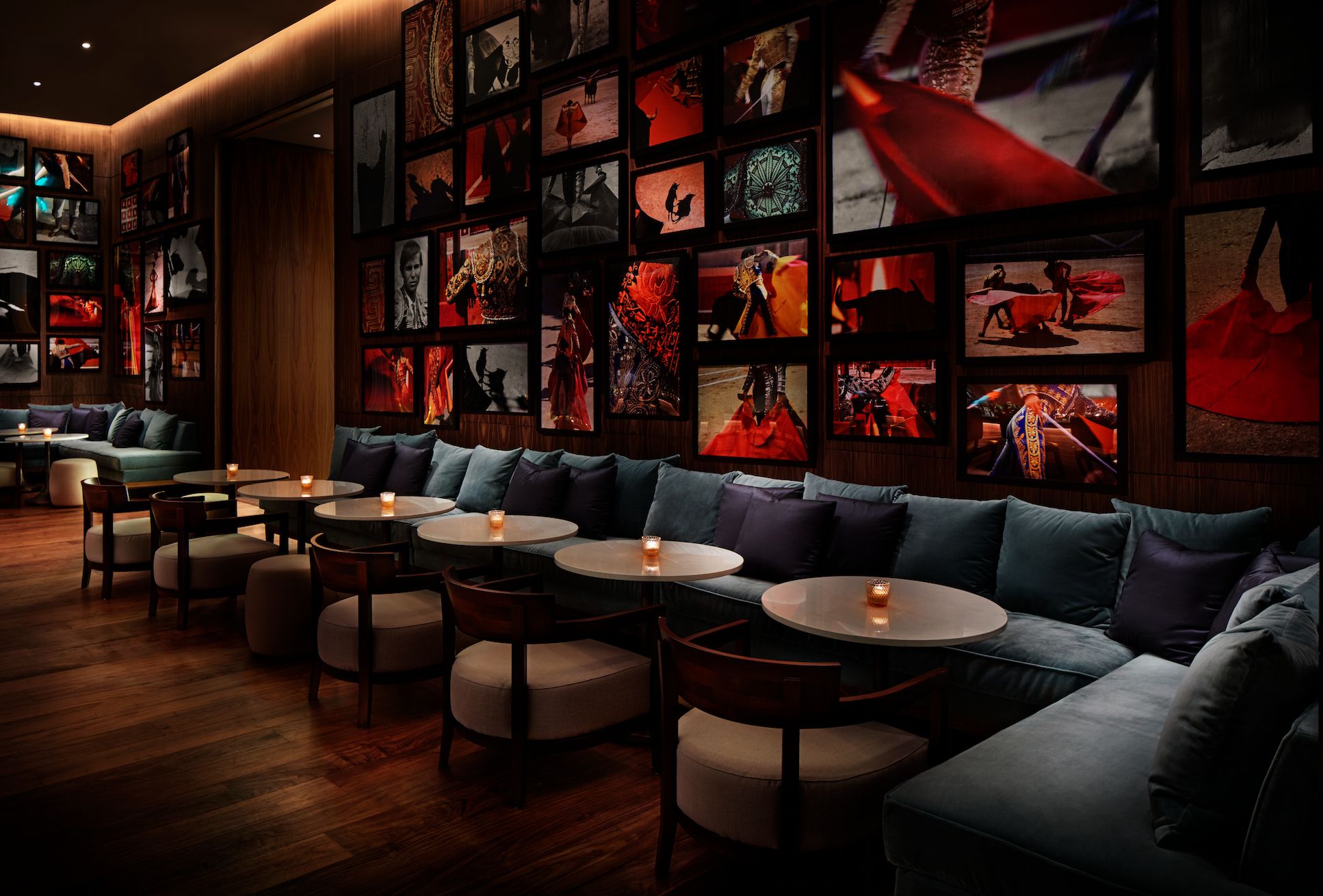For renowned designers Glenn Pushelberg and George Yabu of the firm Yabu Pushelberg—who recently collaborated with hotelier Ian Schrager to launch the Miami Beach Edition Hotel—a good interior evokes emotion. “It’s about the sum of its parts that makes the whole great,” says Pushelberg—and its this very notion that masked the Miami Edition such an impressive project. The beachfront property is sited in the building of the former Seville Hotel, which first opened in 1955, and was purchased by Marriott International in July 2010 during a period described as the “new Miami.” Striking a balance between new construction and preservation of of the original structure, the hotel creates a remarkable contrast. One example is the newer rectangular pool versus the pre-existing crescent-shaped one nearby: Although keeping the original pool was a building requirement, Yabu says having both is advantageous for year-round poolside lounging, as the sun changes position for season to season. “You just move to the other pool,” he says.
An Oasis of Calm in an Energetic and Crazed City
A historic beachfront hotel makes a big splash in Miami with a design upgrade and relaunch.
By Roxy KirshenbaumMarch 15, 2015


Entry, Lobby, and Restaurant
Creating a sense of calm and lightness from the outdoor area to the inside of the hotel was achieved through the use of soft, natural materials in a neutral palette. Scraggier worked with the designers to construct a stripped-down design. “It’s confident, self-assured, and without artifice or pretense,” he says. “I like that we worked hard to pare it down, edit it, and reduce it to its essence. It’s simple. Emphasizing that simplicity doesn’t equate to minimalism, but rather refinement,” he adds. “[Simplicity] cannot be placed in a box.”
Guest Rooms
In contrast to the darker hues used in the Matador Room, the guest rooms take on a lighter, brighter, color scheme with creamy-white porcelain tile floors and soft furnishings in white linen. One of the guest room’s central fixtures is a plush armchair. “[Sitting in the chair] is like being at zero gravity,” Yabu says. “It’s probably even more comfortable than the bed.” Continuing to instill a sense of calm is the placement of the bed and an open-plan concept, which includes floating, entirely placed bathroom vanities; instead of being attached to the walls, the vanities free up the space visually.
Not to be overlooked, says Pushelberg, is the hotel’s spa, which features nine private treatment rooms; a far-infrared sauna; nail, hair, and makeup services; a steam room; and a retail shop. An ethereal, oversized relaxation room has custom-made daybeds and vintage Moroccan rugs, as well as lighting deigned by Arnold Chan, a personal friend of the designers. “He lit it in a very romantic way,” Pushelberg says.

Recreation
Unlike any ordinary hotel, the Miami Beach Edition houses an “adult playground” called the Basement, though “it doesn’t really feel like a basement,” Yabu says. The lower level comprises a bowling alley with mirror-lined lanes that create an infinity effect, an ice rink, and a nightclub. The duo avoided over designing the space in the manner of a typical Miami nightclub. Simple lighting includes rows of LED lights with a rotating motor that underscores a long bar and two L-shaped sofas. “That was it.” Pushelberg says. “You’re just meant to dance your ass off.” The designers wanted the nightclub to be reminiscent of the iconic Studio 54—of which Schrager was the co-proprieter—in the 1970s and early ’80s. “Back in those days of Studio 54, people were more integrated,” Yabu says. “You had people from uptown, Upper East Side, mingling with Andy Warhol. You’d have Halston and Bianca Jagger all mixed together.”
When asked to host the hotel’s unveiling party in the nightclub during Art Basel Miami Beach this past December, the designers initially imagined the event to be called “What New York Used to Be.” Abu Pushelberg hired D.J.s from London, Horse Meat Disco, who played music paying tribute to Schrager’s previous era, when “people had happiness and it wasn’t about bottle service or prevention,” Pushelberg says. The event was a success. In thinking about how the hotel might be remembered decades from now, Yabu says, “I think this hotel is a memory, it’s not one specific thing, there is a feeling of it being a special space, intrinsically beautiful and emotionally relaxing. You don’t find that in Miami.”
